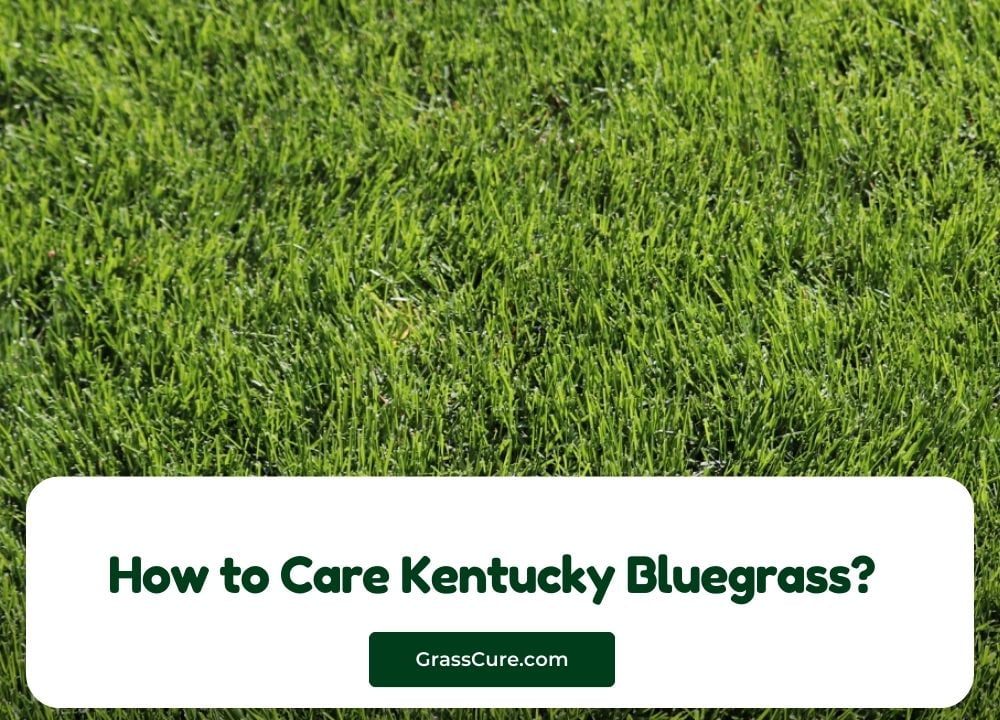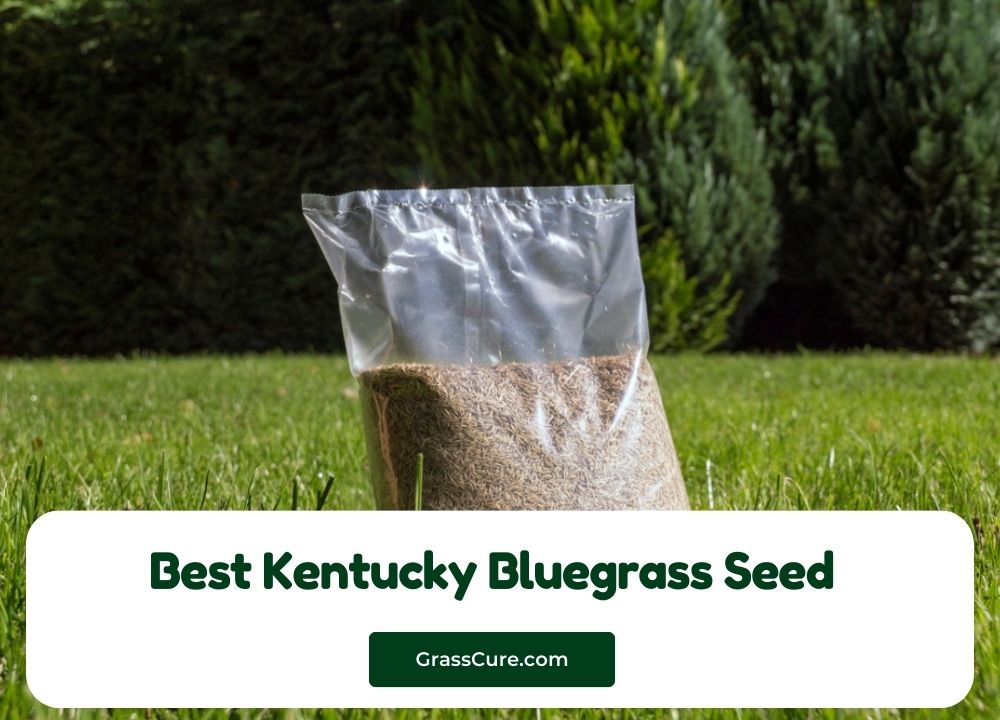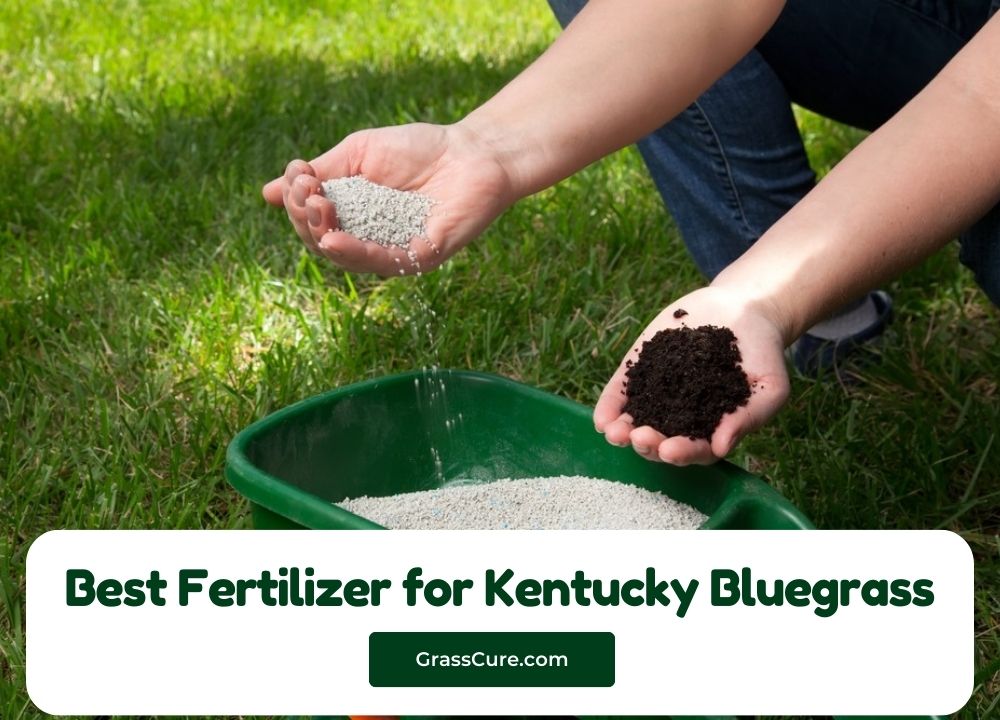Kentucky Bluegrass (Poa pratensis) is a popular choice for lawns, parks, and athletic fields, known for its lush, dense growth and vibrant green color. Renowned for its ability to thrive in a variety of climates and its resistance to drought, this cool-season grass is both attractive and functional. However, achieving a healthy, beautiful Kentucky Bluegrass lawn requires proper care and maintenance. In this guide, we’ll explore the essential practices for planting, maintaining, and nurturing Kentucky Bluegrass, ensuring that your lawn remains lush and vibrant throughout the seasons. Whether you’re a seasoned gardener or a novice, these tips will help you cultivate a thriving landscape that enhances your outdoor space.
Guide to Care For Kentucky Bluegrass
Understanding Kentucky Bluegrass
Kentucky Bluegrass (Poa pratensis) is a perennial grass species native to Europe, but it has become a staple in North American lawns and landscapes due to its aesthetic appeal and adaptability.
Description and Characteristics
Kentucky Bluegrass is characterized by its fine texture, rich green color, and ability to form a dense sod. Its blades are narrow and can grow to about 6 to 12 inches in height. This grass type spreads through underground rhizomes, allowing it to fill in bare spots and recover from damage effectively.
Climate and Soil Preferences
This grass thrives in cool-season areas, making it ideal for northern regions with cold winters and moderate summers. Kentucky Bluegrass prefers well-drained, fertile soils with a pH between 6.0 and 7.0. It grows best in full sun but can tolerate partial shade, making it versatile for various lawn conditions.
Common Uses
Beyond its role as a lawn grass, Kentucky Bluegrass is widely used in parks, golf courses, and sports fields. Its durability and ability to withstand heavy foot traffic make it a preferred choice for athletic fields where performance and aesthetics are paramount.
Benefits
Kentucky Bluegrass offers several advantages:
- Drought Resistance: Once established, it can withstand short periods of drought, making it a practical choice for regions with variable rainfall.
- Shade Tolerance: It can perform reasonably well in shaded areas, though it prefers full sunlight.
- Attractive Appearance: Its rich color and dense growth pattern create a lush, inviting landscape that enhances curb appeal.
Understanding the unique characteristics and benefits of Kentucky Bluegrass will help you make informed decisions about planting and maintaining a vibrant lawn that meets your aesthetic and functional needs.
Planting Kentucky Bluegrass
Successfully establishing a Kentucky Bluegrass lawn involves careful planning and execution. Here’s a step-by-step guide to ensure optimal growth and health:
Best Time to Plant
The ideal times to plant Kentucky Bluegrass are early spring (April to early June) and early fall (mid-August to mid-September). Planting during these periods allows the grass to establish roots before the stress of summer heat or winter cold.
Site Selection and Soil Preparation
- Soil Testing: Before planting, conduct a soil test to determine pH and nutrient levels. Kentucky Bluegrass thrives in slightly acidic to neutral soils (pH 6.0 to 7.0). Amend the soil as needed with lime or sulfur to adjust pH.
- Choosing the Right Location: Select a site that receives full sun (6-8 hours of sunlight daily) and has good drainage. Avoid areas prone to water pooling.
- Soil Preparation: Clear the area of weeds, rocks, and debris. Loosen the top 3-4 inches of soil with a tiller or rake. Incorporate organic matter, such as compost, to improve soil structure and fertility.
Seeding Techniques
- Recommended Seed Rates: For new lawns, use about 2 to 3 pounds of seed per 1,000 square feet. If overseeding an existing lawn, use 1 to 2 pounds per 1,000 square feet.
- Methods of Seeding:
- Broadcasting: Use a hand or mechanical broadcast spreader to evenly distribute the seeds across the prepared soil. Ensure good coverage by going in multiple directions.
- Hydroseeding: For larger areas, consider hydroseeding, which combines seed, water, and mulch for even distribution.
Watering After Planting
- Initial Watering: After seeding, lightly water the area to ensure good seed-to-soil contact. Avoid heavy watering that may wash away seeds.
- Establishing a Watering Schedule: Keep the soil consistently moist but not saturated until the seeds germinate. Once the grass is established (usually within 14 to 30 days), reduce watering to encourage deeper root growth.
Maintenance Practices for Kentucky Bluegrass
To ensure your Kentucky Bluegrass lawn remains healthy and vibrant, regular maintenance practices are essential. Here are key aspects of lawn care to focus on:
Mowing
- Ideal Mowing Height: Keep your Kentucky Bluegrass at a height of 2.5 to 3.5 inches. Mowing at this height encourages deeper root growth and improves drought resistance.
- Frequency of Mowing: Mow regularly, ideally every 5 to 10 days during the growing season, or as needed to maintain the desired height. Avoid cutting more than one-third of the grass height at a time to prevent stress.
- Tips for Sharp Mower Blades: Ensure your mower blades are sharp to make clean cuts, which minimizes stress and reduces the risk of disease. Sharpen blades every 4-6 weeks during the growing season.
Watering
- Best Practices for Irrigation: Water your lawn deeply and infrequently to encourage deep root development. Aim for about 1 to 1.5 inches of water per week, including rainfall.
- Signs of Overwatering and Underwatering: Watch for signs of stress, such as wilting or browning grass for underwatering, and puddling or moss growth for overwatering.
- Adjusting Watering Schedule for Seasonal Changes: In hot summer months, you may need to increase watering frequency, while in cooler months, reduce it. During fall and spring, monitor rainfall to adjust your schedule accordingly.
Fertilization
- Types of Fertilizers: Use a balanced fertilizer with a nitrogen-rich formula. Slow-release fertilizers are often recommended for steady nutrient supply.
- Recommended Fertilization Schedule: Fertilize in early spring (April) and again in late fall (September to October) for optimal growth. A light application of nitrogen in early spring will promote green-up, while fall fertilization helps strengthen roots before winter.
- Importance of Nitrogen for Growth: Nitrogen is crucial for healthy foliage growth, giving Kentucky Bluegrass its lush, green appearance.
Aeration
- Benefits of Aerating Kentucky Bluegrass: Aeration helps relieve soil compaction, allowing air, water, and nutrients to reach the roots more effectively. It also encourages root growth and overall lawn health.
- Best Time to Aerate: Aerate in early spring or fall when the grass is actively growing.
- Tools and Techniques for Aeration: Use a core aerator to remove plugs of soil from the lawn. This method is more effective than spike aeration, which can further compact the soil.
Weed and Pest Management for Kentucky Bluegrass
Maintaining a healthy Kentucky Bluegrass lawn involves not only nurturing the grass but also effectively managing weeds and pests that can compromise its health and appearance. Here are strategies for controlling weeds and pests in your lawn:
Common Weeds Affecting Kentucky Bluegrass
- Identification: Common weeds include dandelions, crabgrass, clover, and chickweed. Identifying these weeds early is crucial for effective control.
- Prevention Strategies:
- Healthy Lawn Practices: Maintain a dense, healthy lawn through proper mowing, watering, and fertilization, as vigorous grass can outcompete many weeds.
- Mulching: In garden beds and around trees, use mulch to suppress weed growth and retain soil moisture.
Integrated Pest Management (IPM)
- Understanding IPM: IPM is a holistic approach that combines cultural, biological, and chemical practices to manage pests effectively while minimizing environmental impact.
- Identifying Common Pests:
- Grubs: These larvae of beetles feed on grass roots, leading to brown patches. Look for signs of grass that pulls up easily or areas that feel spongy.
- Chinch Bugs: Small, black insects that suck the sap from grass blades, leading to yellowing and dying patches. Check for dark patches, especially in hot, dry weather.
Control Measures
- Organic Treatment Options:
- Beneficial Insects: Encourage beneficial insects like ladybugs and predatory beetles that feed on harmful pests.
- Diatomaceous Earth: This natural powder can deter and kill soft-bodied insects by damaging their exoskeletons.
- Chemical Treatment Options:
- Selective Herbicides: Use herbicides specifically designed for Kentucky Bluegrass to control broadleaf weeds without harming the grass. Apply according to the product label instructions.
- Insecticides: If pests are severely affecting your lawn, use insecticides as a last resort. Target products specifically for grubs or chinch bugs and follow safety guidelines.
Importance of Maintaining Healthy Grass
A healthy lawn is your best defense against weeds and pests. Practices such as proper watering, mowing, fertilization, and aeration promote strong grass growth, making it less susceptible to infestations. Regularly monitor your lawn for signs of trouble and address issues promptly to maintain its health and beauty.
Seasonal Care for Kentucky Bluegrass
Caring for your Kentucky Bluegrass lawn throughout the changing seasons is essential for maintaining its health and vibrancy. Each season presents unique challenges and opportunities for lawn care. Here’s a breakdown of seasonal care practices to ensure your grass thrives year-round:
Spring Care
- Cleaning Up Debris: As temperatures rise and snow melts, clean up leaves, branches, and other debris to promote healthy grass growth and prevent disease.
- First Mowing and Fertilization: Once the grass begins to green up, perform the first mow. Keep the mowing height at 2.5 to 3.5 inches to encourage healthy growth. Apply a nitrogen-rich fertilizer to promote lush, green foliage.
- Aeration: If not aerated in the fall, consider aerating in early spring to relieve soil compaction and enhance nutrient and water absorption.
Summer Care
- Managing Heat and Drought Stress: During hot months, monitor your lawn closely. Water deeply (1 to 1.5 inches per week) early in the morning to reduce evaporation and promote root growth. Consider adjusting your irrigation schedule based on rainfall.
- Mowing Height Adjustment: Raise the mowing height to around 3 to 4 inches to provide shade to the soil and reduce moisture loss.
- Weed Control: Regularly inspect for weeds, especially crabgrass. Implement prevention strategies and apply selective herbicides if necessary.
Fall Care
- Raking Leaves and Preparing for Winter: Rake fallen leaves to prevent smothering the grass and promoting diseases. This also helps with airflow and sunlight penetration.
- Late-Season Fertilization and Overseeding: Apply a slow-release fertilizer rich in potassium to strengthen roots before winter. Consider overseeding thin areas with Kentucky Bluegrass to promote a dense lawn.
- Aeration (if not done in spring): Fall is also an excellent time for aeration, allowing for better nutrient uptake before the dormant season.
Winter Care
- Protecting Against Snow Mold: If heavy snow covers your lawn, avoid walking on it to minimize the risk of snow mold. Keep the grass clean and free of debris before snowfall.
- Tips for Winterizing the Lawn: In late fall, consider a final mowing and leave grass clippings on the lawn to provide nutrients as they decompose. Avoid excessive fertilization just before winter to prevent growth that could be damaged by cold.
Conclusion
Caring for Kentucky Bluegrass involves a commitment to understanding its unique needs and implementing effective maintenance practices throughout the year. From selecting the right time to plant and establishing healthy growth to managing weeds, pests, and seasonal challenges, each step plays a crucial role in cultivating a lush, vibrant lawn. By following the outlined guidelines for planting, maintenance, and seasonal care, you can ensure your Kentucky Bluegrass thrives and enhances your outdoor space.
Investing time and effort into proper lawn care not only improves the appearance of your landscape but also contributes to environmental benefits, such as improved air quality and increased biodiversity. With dedication and the right techniques, your Kentucky Bluegrass lawn can provide a beautiful and inviting space for family gatherings, outdoor activities, and relaxation.
Embrace the journey of nurturing your lawn and enjoy the satisfaction of seeing it flourish. Feel free to share your experiences, tips, or questions in the comments below, and connect with fellow lawn enthusiasts who share your passion for creating and maintaining a stunning Kentucky Bluegrass landscape.
Additional Resources
For further information and assistance in caring for your Kentucky Bluegrass lawn, consider these helpful resources:
- Local Cooperative Extension Services
- Many states have cooperative extension services that offer free resources, soil testing, and expert advice tailored to your region. Check out your local extension office for guidance specific to your area.
- Lawn Care Websites and Blogs
- Websites like The Lawn Institute and Penn State Extension provide comprehensive information on lawn care, including specific guides for Kentucky Bluegrass.
- Books on Lawn Care
- “The Lawn Care Manual” by Paul J. McCullough is a great resource for homeowners looking to maintain a healthy lawn.
- “The Organic Gardener’s Handbook of Natural Pest and Disease Control” by Fern Marshall Bradley offers insights into managing pests and diseases organically.
- Recommended Products
- Look for quality fertilizers, weed control products, and pest management solutions at your local garden center or online retailers. Brands like Scotts and Milorganite offer a range of products designed specifically for Kentucky Bluegrass.
- Online Forums and Communities
- Join online communities or forums such as Reddit’s r/lawncare or LawnSite.com, where you can connect with fellow lawn enthusiasts, share experiences, and get advice on specific lawn care issues.
- YouTube Channels
- Channels like “Lawn Care Nut” and “Mike’s Backyard Garden” provide helpful video tutorials on lawn care techniques, product reviews, and maintenance tips for Kentucky Bluegrass.
- Professional Lawn Care Services
- If you prefer expert assistance, consider hiring a local lawn care service. Many offer tailored maintenance plans that include fertilization, aeration, and pest control.


